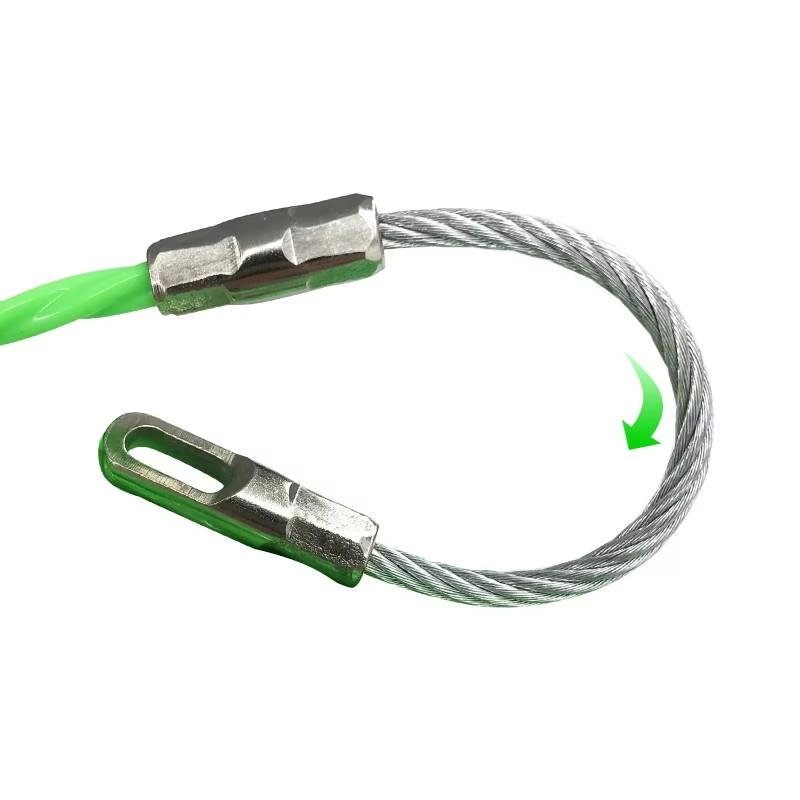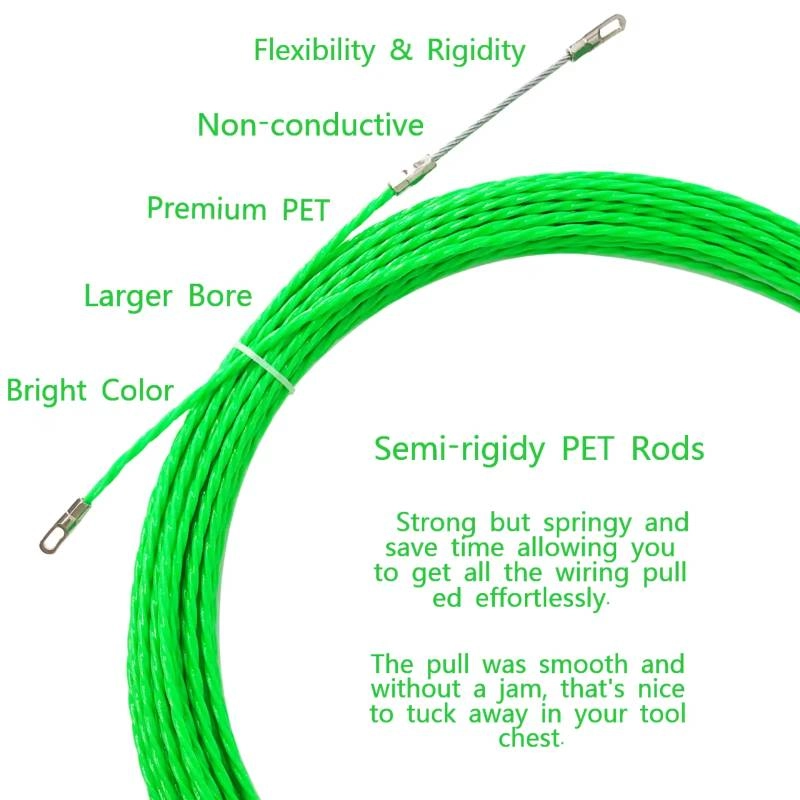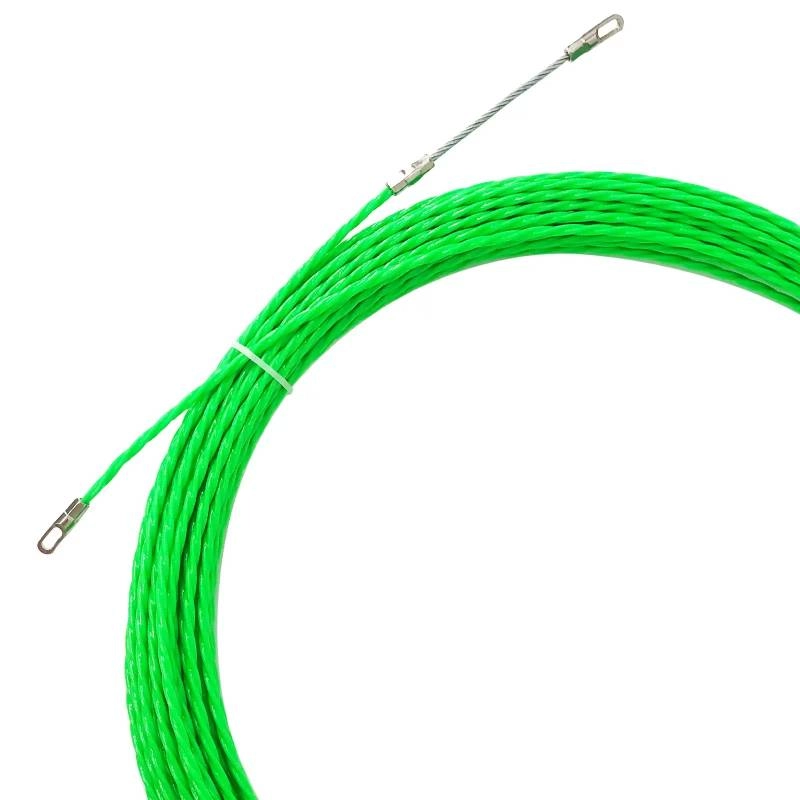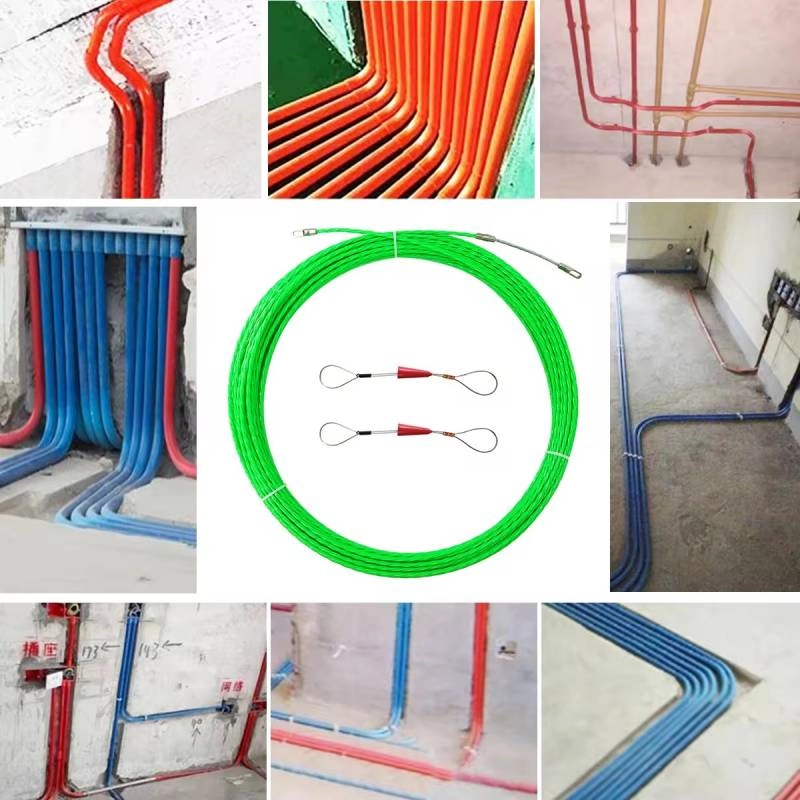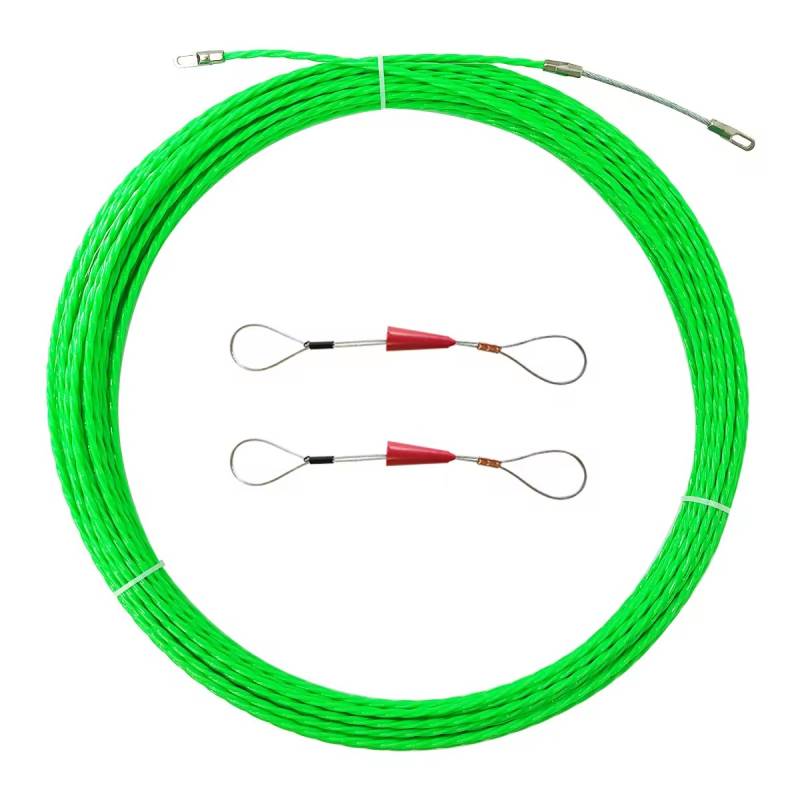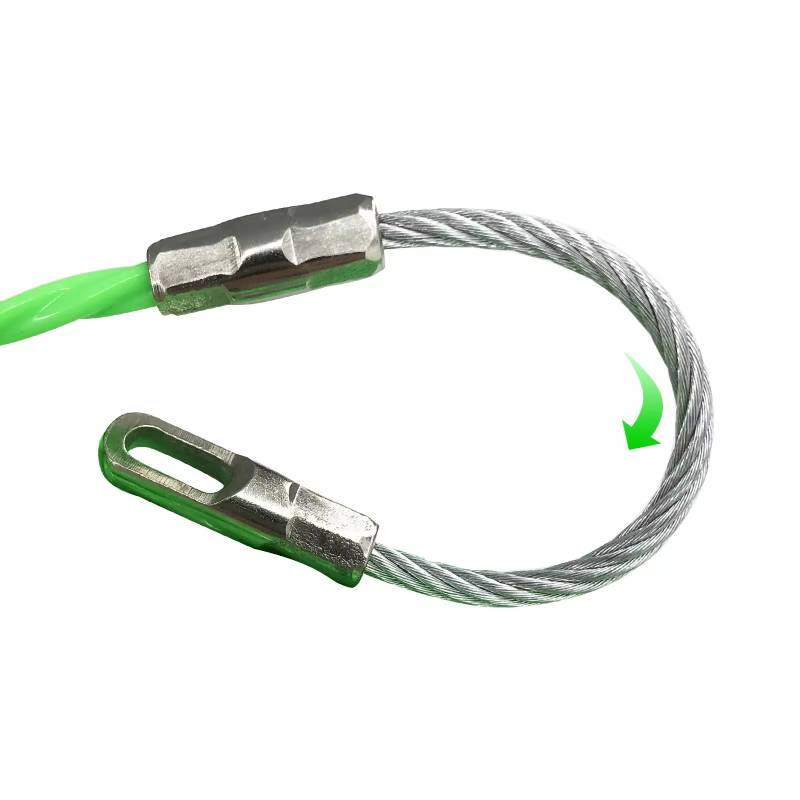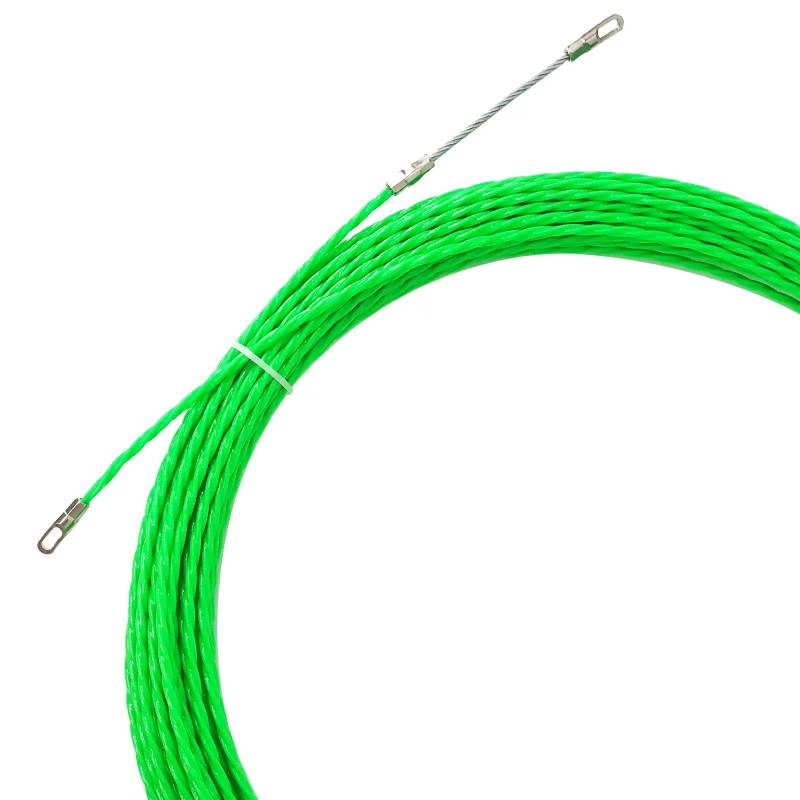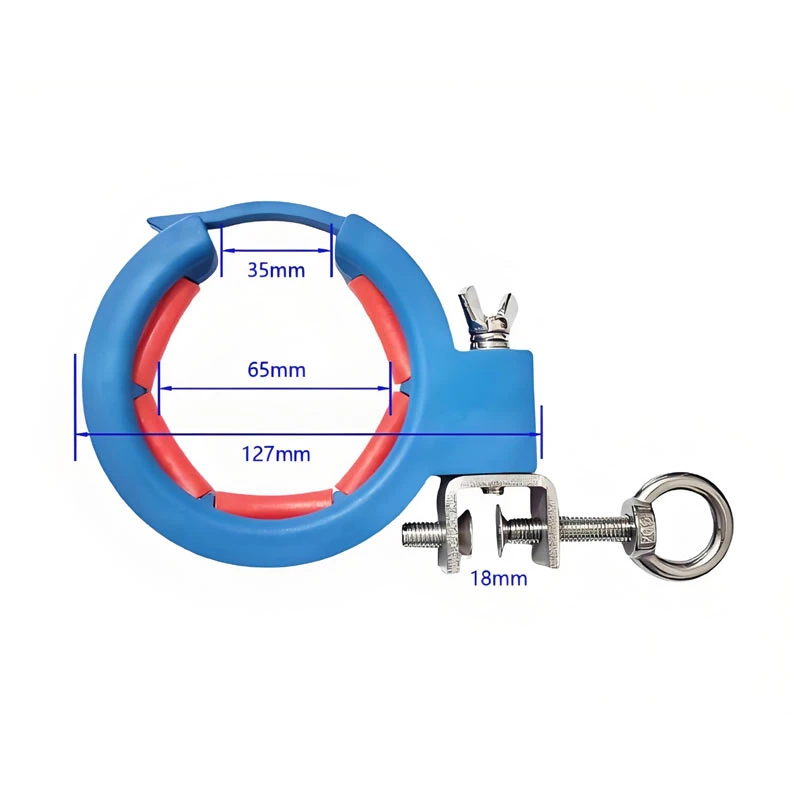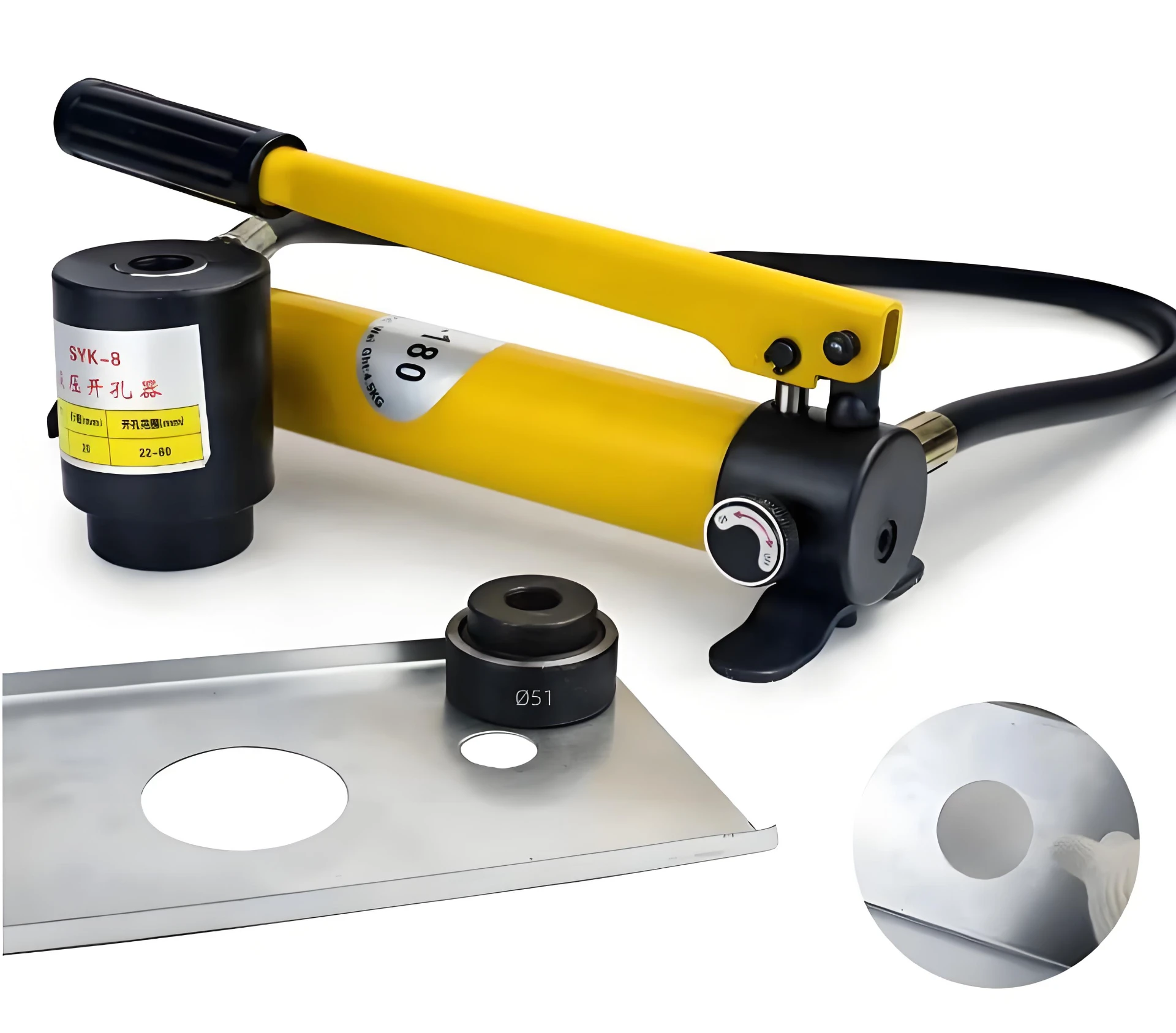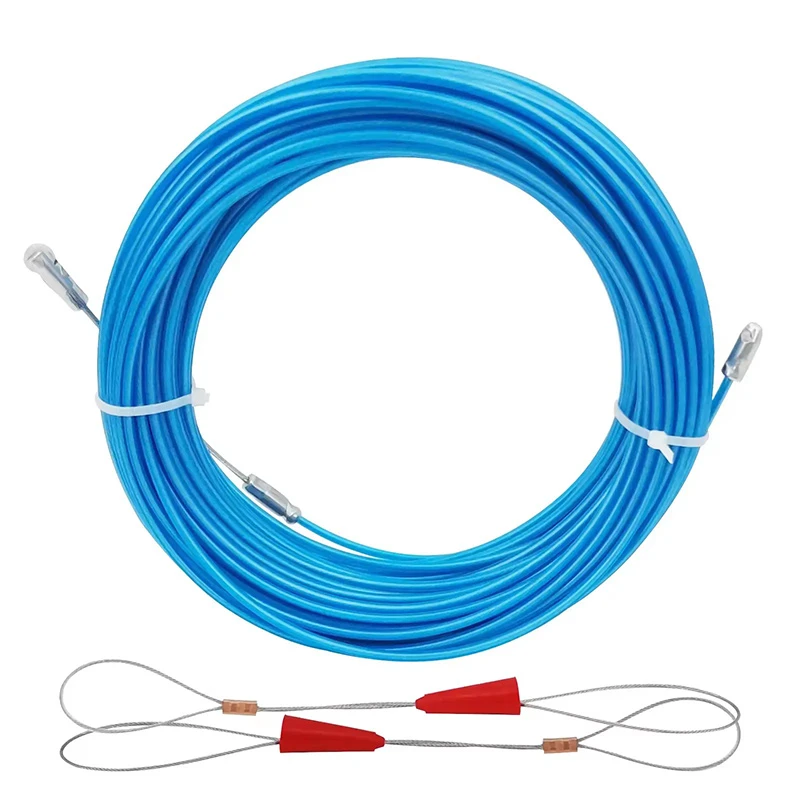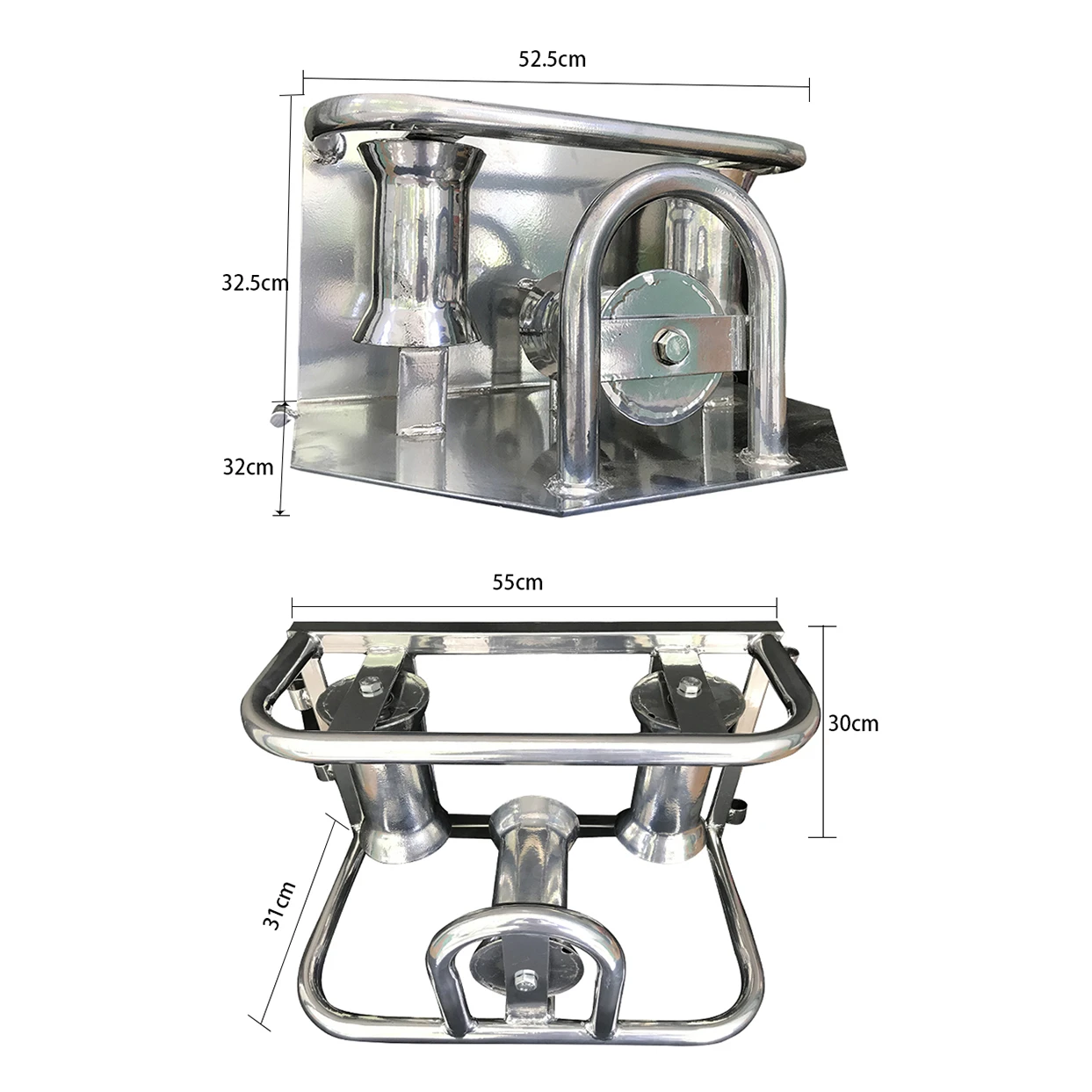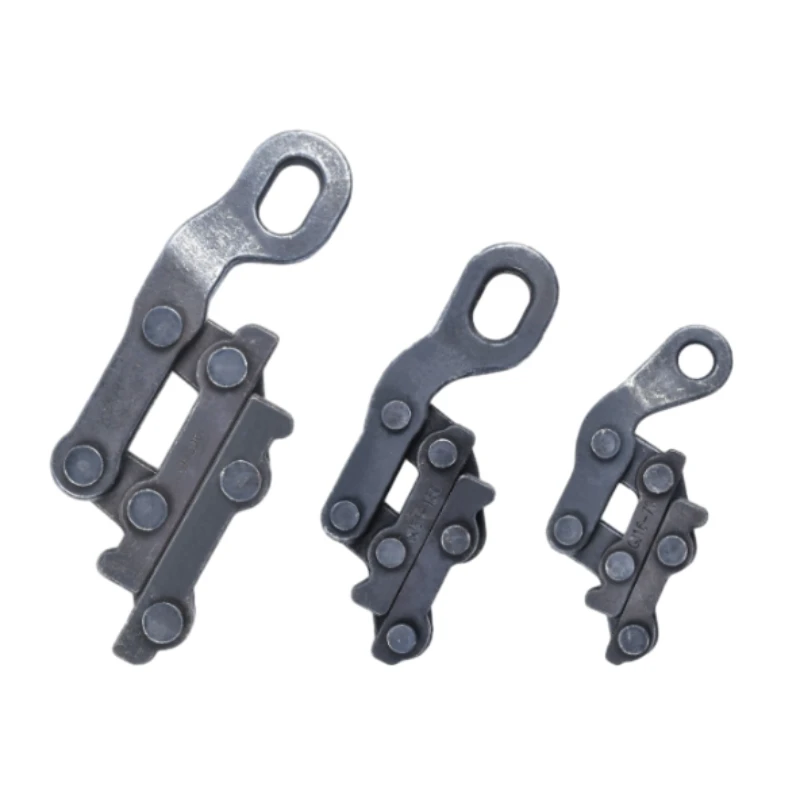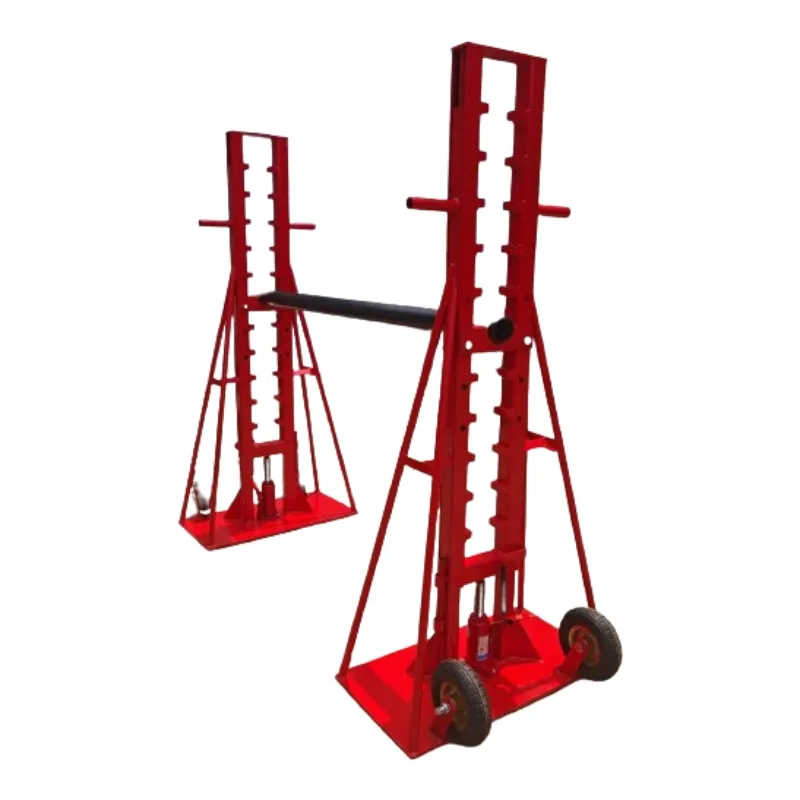- Zoo meej saj zawg zog thiab rigidity tsis zoo li fiberglass hlau, nws yuav tsis tawg yog tias koj khoov ntau dhau, tsis zoo li lwm cov hlau ntses daim kab xev, nws yuav tsis curl ntau cov ntses daim kab xev muaj zog traction, zoo saj zawg zog, anti-aging thiab kub.
- Cov kab nuv ntses ntau yam siv tau rau kev sib txuas lus, hluav taws xob, phab ntsa, hauv pem teb conduit thiab lwm yam kev teeb tsa.
- 360°available head wheel the head wheel at the end of the cable is 360°available, very easy to across through the bends.
- Cov xim ci, sim khiav ib qho xaim ntxiv los ntawm cov kav dej thaum muaj ntau cov xov hlau uas twb muaj lawm yog qhov nyuaj. Cov xim ci yog qhov pom nws pom kev rau koj ua haujlwm nyuaj ua tau. Nrhiav nws thiab rub nws yooj yim!
- Kev yooj yim dua li fiberglass ntses tapes, daim kab xev ntses no yuav tsis tawg thaum folded los yog tawm tsis xis nyob.
- Kauv extruded polymer tsim tsis xeb thiab txo qhov kev siv dag zog uas yuav tsum tau thawb lossis rub cov ntses daim kab xev los ntawm PVC conduit
- Fish Tape Wire Puller Electrical Cable Pulling Through Wall Threader Kit is applicable for telecom, electrical wire, wall, floor conduit and other wiring installation.
- Fish Cable yog lub cuab yeej zoo tshaj plaws los pab koj rub cov cables los ntawm cov kav dej.
- Nws yog tsim tshwj xeeb los ua kom tau raws li cov kev xav tau ntawm cov neeg siv hluav taws xob.
- Fish tape fastener is used to help fish tape more convenient to use. The Head wheel at the end of the steel wire is 360° available, much easy to across through the bends.
- Thiab txoj kev sib txuas tshwj xeeb ua rau nws ruaj khov thiab yooj yim lub neej.

Different Types of Cable Pullers and Fish Tapes and Their Applications
Cable pullers and fish tapes are essential tools for electricians, technicians, and industrial installers. They are designed to guide, pull, and route electrical cables through conduits, walls, and tight spaces efficiently. Understanding the different types of cable pullers and fish tapes, along with their specific applications, can help professionals select the most suitable tool for each project.
1.Fiberglass Fish Tape:
Fiberglass fish tapes are lightweight, flexible, and non-conductive, making them ideal for working near live circuits. They are available in various thicknesses and lengths, such as 3mm×30m, to suit different conduit sizes and installation scenarios. The flexibility of fiberglass allows it to navigate tight bends and long conduit runs without kinking or damaging cables. Fiberglass tapes are commonly used in residential, commercial, and industrial electrical installations, where safety, cable protection, and maneuverability are critical.
2. Steel Fish Tape:
Steel fish tapes are strong and rigid, providing superior push capability through longer or obstructed conduits. They are more suitable for industrial installations or situations where the conduit may have heavy bends or obstacles. Steel fish tapes are durable and can handle heavier gauge cables, but they are conductive, so extra caution is needed when working near live circuits.- 3. Nylon or Plastic Cable Pullers:
Nylon or plastic cable pullers are lightweight and corrosion-resistant. They are often used for smaller or low-voltage cable installations. While they may not provide the rigidity of steel, they are easy to handle and reduce the risk of cable damage in sensitive applications. These types of pullers are ideal for temporary setups or indoor installations with minimal mechanical stress.
4. Manual Cable Pullers (Hand Winches):
Manual cable pullers, sometimes called hand winches, are designed for pulling heavy-duty cables over longer distances or through large conduits. They often come with a ratchet mechanism or handle to provide mechanical advantage, reducing operator fatigue. These pullers are widely used in utility projects, industrial wiring, and outdoor installations.
5. Electric or Hydraulic Cable Pullers:
Electric and hydraulic cable pullers are powered solutions for large-scale or repetitive cable installations. They provide consistent pulling force, which is especially useful for high-tension cables or long conduit runs. These pullers increase efficiency, reduce labor requirements, and are commonly used in industrial, telecom, and power distribution projects.
Daim ntawv thov:
Residential wiring: Fiberglass or nylon fish tapes are ideal for routing cables through walls and small conduits safely.
Commercial buildings: Steel fish tapes or manual pullers handle longer runs and larger cable bundles.
Industrial installations: Electric or hydraulic pullers are used for high-capacity cables in factories or power plants.
Telecommunications: Fiberglass fish tapes ensure safe routing of fiber optic and low-voltage cables through complex conduits.
In conclusion, the choice of cable puller or fish tape depends on the cable type, installation environment, conduit length, and required pulling force. By selecting the appropriate tool—fiberglass, steel, manual, or powered—professionals can ensure safe, efficient, and damage-free cable installations across a variety of projects. Proper tool selection not only improves productivity but also enhances safety and cable longevity.
Choosing the Right Cable Puller/Fish Tape for Long Cable Runs and Tight Conduits
Selecting the appropriate cable puller or fish tape is critical for completing electrical installations efficiently, safely, and without damaging cables. Long cable runs and tight conduits present unique challenges, such as increased friction, bends, and the potential for cable kinks or insulation damage. Understanding the features, materials, and types of cable pullers and fish tapes helps professionals choose the right tool for their specific installation requirements.
1.Material Considerations:
The material of a fish tape greatly affects its flexibility, strength, and safety. Fiberglass fish tapes are lightweight, non-conductive, and flexible, making them ideal for long runs in tight or complex conduit paths, especially near live circuits. They glide smoothly around bends and reduce the risk of cable damage. Steel fish tapes, on the other hand, offer greater rigidity and pushing force, which is beneficial when navigating extremely long conduits or multiple obstacles. However, steel is conductive, so extra care must be taken when working near energized circuits.
2. Tape Thickness and Length:
For long cable runs, the thickness and length of the fish tape are important considerations. A thicker tape can handle more tension without bending excessively, which is crucial when pulling heavier cables over long distances. For example, a 3mm×30m fiberglass fish tape provides sufficient rigidity and flexibility for most residential and commercial applications. Choosing the correct length ensures the tape reaches the end of the conduit without the need for extensions, reducing time and labor.
3. Handling and Ergonomics:
Ease of handling is essential for tight conduits. Lightweight and flexible tapes reduce operator fatigue, especially when feeding and retrieving the tape through long runs. Many modern fish tapes come with ergonomic reels or handles to improve control, prevent kinks, and allow for smooth deployment and retraction.
4. Safety Features:
Non-conductive materials, smooth edges, and reinforced tips are important for preventing injuries and cable damage. In tight or hard-to-access conduits, a strong but flexible tip can navigate corners without snagging or scratching cable insulation.
5. Specialized Pullers for Heavy Cables:
For extremely heavy-duty cables or industrial applications, manual hand winches or powered electric/hydraulic pullers may be necessary. These tools provide consistent pulling force, allowing longer cable runs to be completed efficiently while minimizing strain on personnel.
Daim ntawv thov:
Residential installations: Fiberglass fish tapes work well for routing cables through wall cavities and tight conduits.
Commercial projects: Steel or fiberglass tapes handle longer conduit runs with multiple bends.
Industrial settings: Powered cable pullers ensure heavy or high-tension cables are installed safely over long distances.
In conclusion, choosing the right cable puller or fish tape depends on material, length, flexibility, and application requirements. By carefully considering the cable type, conduit layout, and installation environment, professionals can ensure efficient, safe, and damage-free cable runs—even in tight and complex pathways. Proper tool selection improves productivity, protects cables, and enhances the overall quality of electrical installations.
Top Benefits of Using a Cable Puller/Fish Tape for Efficient Wire Installation
A cable puller or fish tape is an indispensable tool for electricians, technicians, and industrial installers, designed to streamline the process of routing wires through conduits, walls, and tight spaces. Whether used in residential, commercial, or industrial settings, the right fish tape or cable puller offers significant advantages in terms of efficiency, safety, and cable protection.
1.Enhanced Work Efficiency:
One of the primary benefits of using a cable puller or fish tape is its ability to save time and reduce labor. Instead of manually threading cables through conduits—a process that can be cumbersome, slow, and error-prone—these tools allow electricians to feed wires quickly and smoothly. For long conduit runs or complex layouts, the right puller ensures that cables glide through without unnecessary twists or tangles, reducing installation time and increasing overall productivity.
2. Improved Safety:
Safety is a critical consideration when handling electrical wiring. Fiberglass or nylon fish tapes are non-conductive, which minimizes the risk of electrical shock when working near live circuits. Additionally, cable pullers reduce the need for physically manipulating heavy or awkward cables, lowering the risk of strain or injury. In industrial environments, where cables may need to pass through machinery or confined spaces, the use of a puller provides a controlled and safe method of installation.
3. Cable Protection:
A proper cable puller prevents unnecessary wear and damage to wire insulation. Smooth, well-designed fish tapes reduce friction inside conduits, minimizing abrasion or kinking. This is especially important for long cable runs or when pulling sensitive or high-voltage cables. By protecting the cable integrity, electricians can avoid costly replacements, electrical faults, and downtime caused by damaged wiring.
4. Versatility and Adaptability:
Cable pullers and fish tapes are available in various materials, lengths, and thicknesses, allowing them to adapt to different applications. Fiberglass fish tapes offer flexibility for tight bends, while steel tapes provide rigidity for longer, obstacle-laden conduits. Manual, electric, or hydraulic pullers can handle light, medium, or heavy-duty cables, making them suitable for residential, commercial, and industrial installations alike.
5. Reduced Fatigue and Labor Costs:
By simplifying the cable installation process, these tools reduce the physical effort required from installers. Ergonomic reels, lightweight construction, and mechanical advantages provided by some pullers mean that tasks can be completed faster and with less strain, ultimately lowering labor costs and improving worker efficiency.
In conclusion, using a cable puller or fish tape enhances installation efficiency, promotes safety, protects cables, and reduces labor fatigue. Its versatility and adaptability make it an essential tool for any professional wiring project, ensuring smooth, reliable, and high-quality installations across residential, commercial, and industrial environments.




















































































































